Team Working & Communication: Models, Skills, and Technology
VerifiedAdded on 2023/06/10
|18
|1240
|237
Report
AI Summary
This report provides a comprehensive overview of team working and communication. It begins by defining communication and its significance in the workplace, emphasizing its role in teamwork and project collaboration. The report then explores various communication models, including those by Weaver and Shannon, Schramm, and Berlo, detailing their components and functions. It delves into communication skills, differentiating between verbal and non-verbal communication, and highlighting the importance of active and empathetic listening. Furthermore, it addresses the disadvantages of modern technology, such as increased dependency and impacts on study habits. The report concludes by reiterating the importance of teamwork and communication for organizational success, and references relevant books and journals.
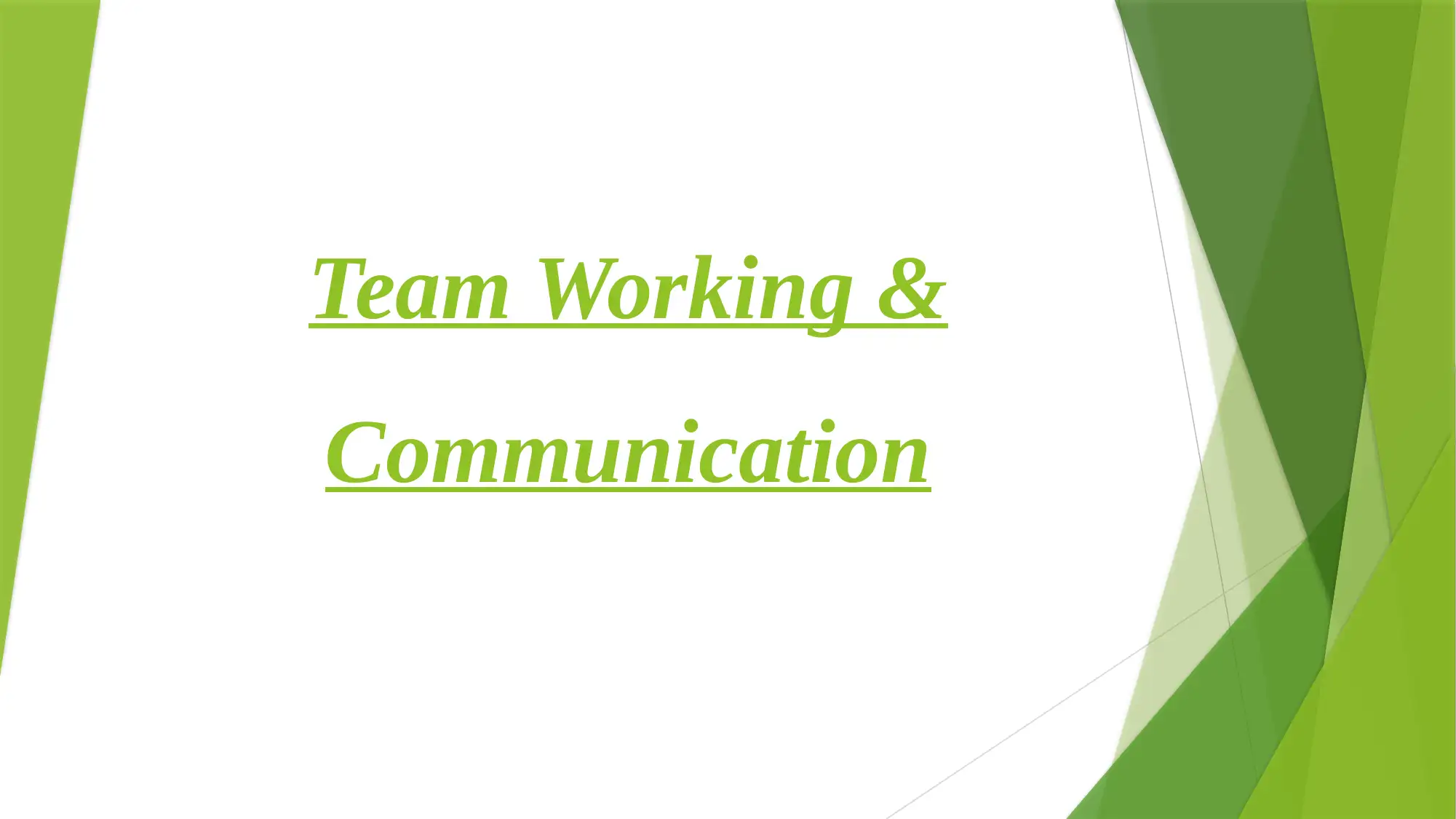
Team Working &
Communication
Communication
Paraphrase This Document
Need a fresh take? Get an instant paraphrase of this document with our AI Paraphraser
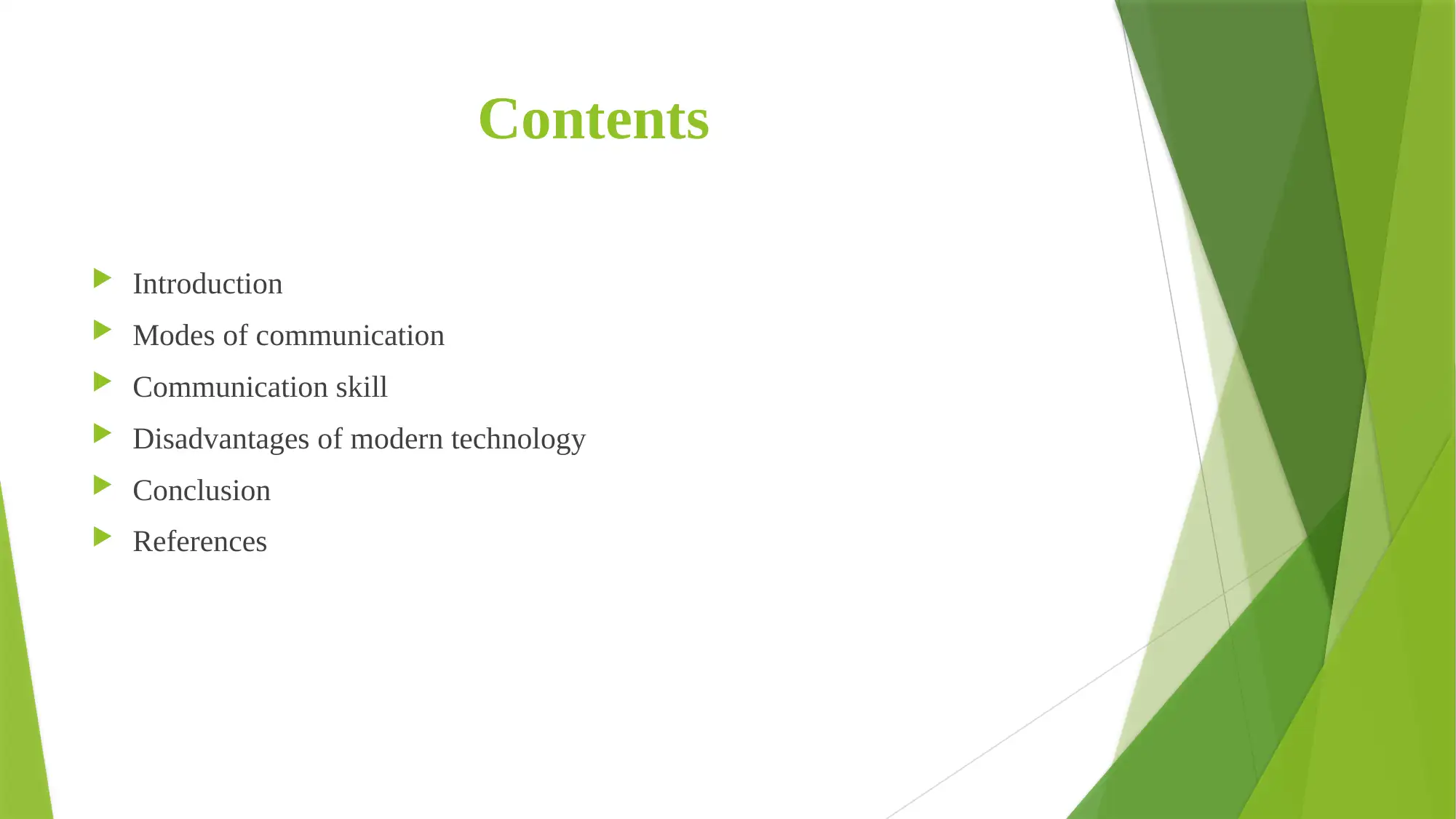
Contents
Introduction
Modes of communication
Communication skill
Disadvantages of modern technology
Conclusion
References
Introduction
Modes of communication
Communication skill
Disadvantages of modern technology
Conclusion
References

INTRODUCTION
Communication basically refers to the act of
transforming information from one person
place and group to another one. Communication
basically involves receiver, sender, recipient and
message as well . Communication at work place
is significant in terms of streamlining the
internal communication. Good communication
into the work place boosts towards team work
and lead to a better project collaboration as well.
Communication basically refers to the act of
transforming information from one person
place and group to another one. Communication
basically involves receiver, sender, recipient and
message as well . Communication at work place
is significant in terms of streamlining the
internal communication. Good communication
into the work place boosts towards team work
and lead to a better project collaboration as well.
⊘ This is a preview!⊘
Do you want full access?
Subscribe today to unlock all pages.

Trusted by 1+ million students worldwide
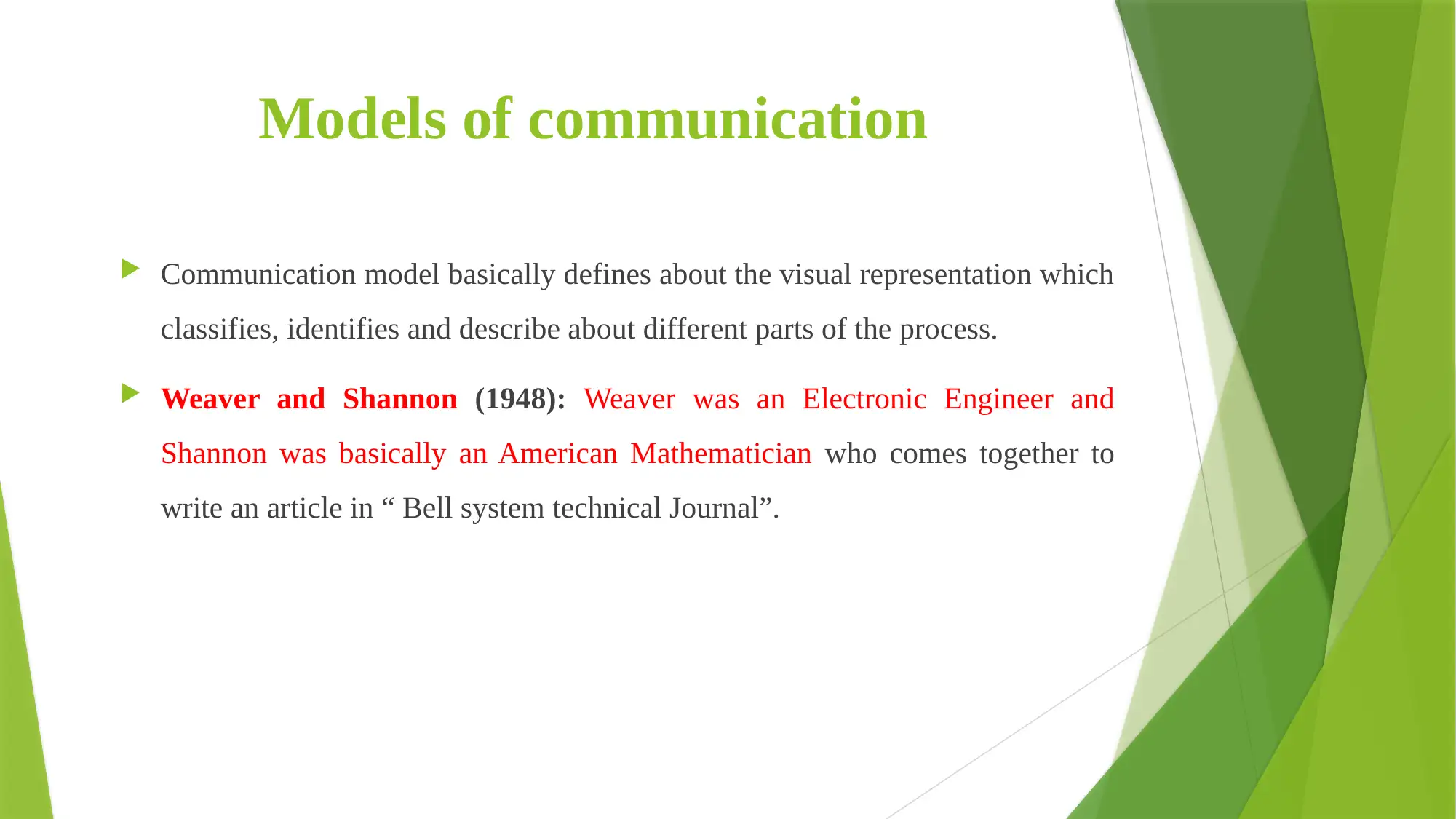
Models of communication
Communication model basically defines about the visual representation which
classifies, identifies and describe about different parts of the process.
Weaver and Shannon (1948): Weaver was an Electronic Engineer and
Shannon was basically an American Mathematician who comes together to
write an article in “ Bell system technical Journal”.
Communication model basically defines about the visual representation which
classifies, identifies and describe about different parts of the process.
Weaver and Shannon (1948): Weaver was an Electronic Engineer and
Shannon was basically an American Mathematician who comes together to
write an article in “ Bell system technical Journal”.
Paraphrase This Document
Need a fresh take? Get an instant paraphrase of this document with our AI Paraphraser
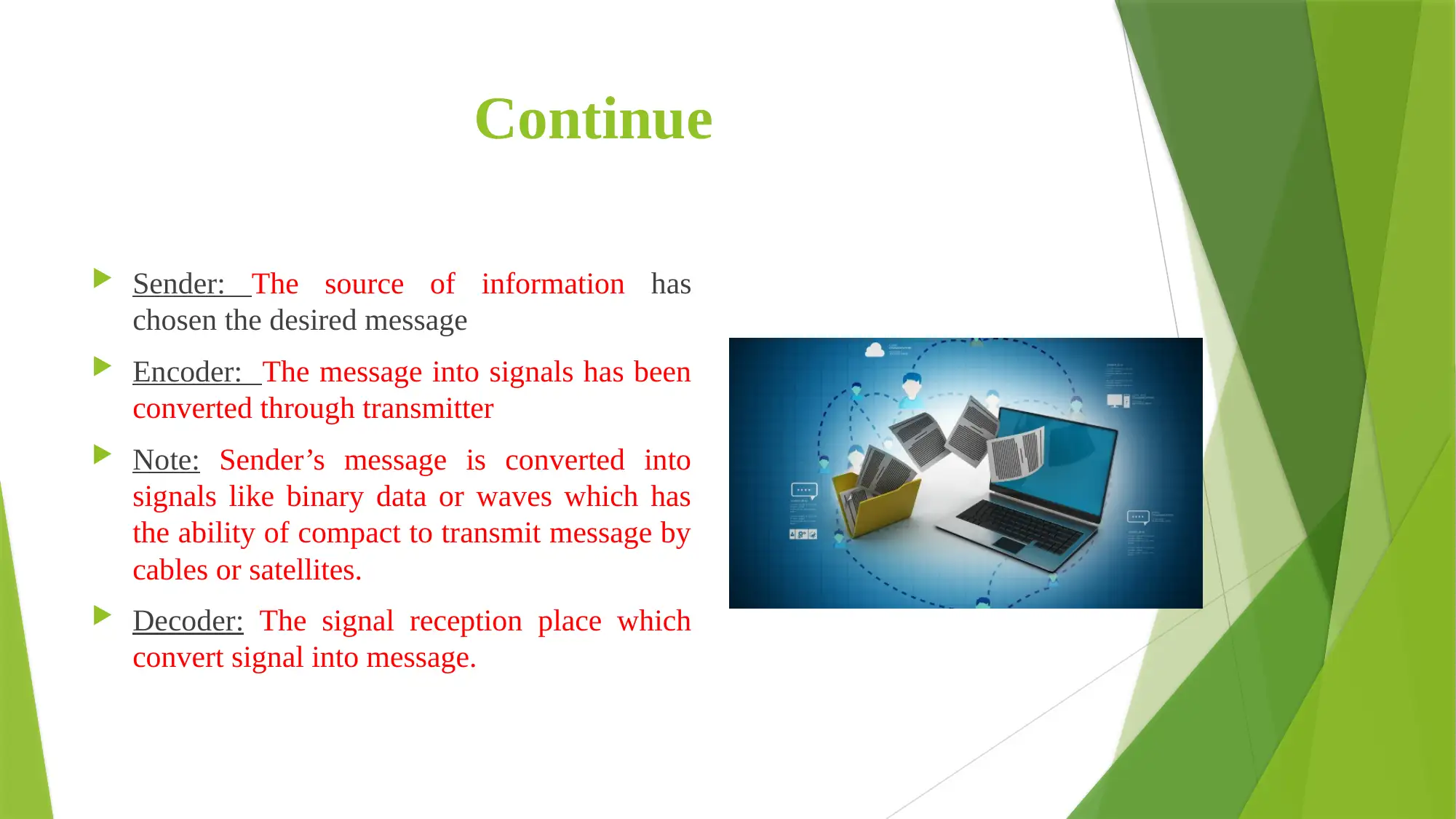
Continue
Sender: The source of information has
chosen the desired message
Encoder: The message into signals has been
converted through transmitter
Note: Sender’s message is converted into
signals like binary data or waves which has
the ability of compact to transmit message by
cables or satellites.
Decoder: The signal reception place which
convert signal into message.
Sender: The source of information has
chosen the desired message
Encoder: The message into signals has been
converted through transmitter
Note: Sender’s message is converted into
signals like binary data or waves which has
the ability of compact to transmit message by
cables or satellites.
Decoder: The signal reception place which
convert signal into message.
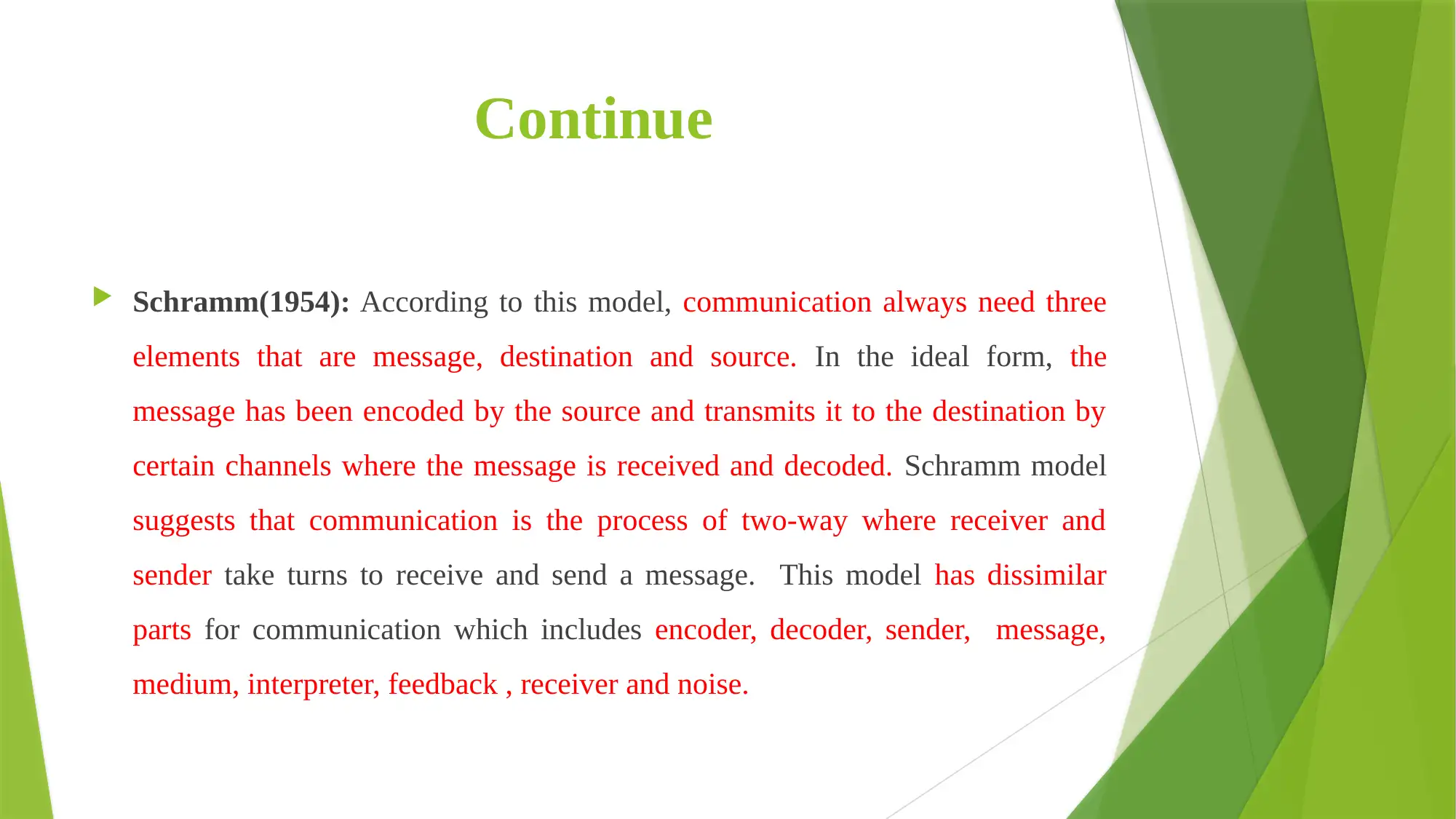
Continue
Schramm(1954): According to this model, communication always need three
elements that are message, destination and source. In the ideal form, the
message has been encoded by the source and transmits it to the destination by
certain channels where the message is received and decoded. Schramm model
suggests that communication is the process of two-way where receiver and
sender take turns to receive and send a message. This model has dissimilar
parts for communication which includes encoder, decoder, sender, message,
medium, interpreter, feedback , receiver and noise.
Schramm(1954): According to this model, communication always need three
elements that are message, destination and source. In the ideal form, the
message has been encoded by the source and transmits it to the destination by
certain channels where the message is received and decoded. Schramm model
suggests that communication is the process of two-way where receiver and
sender take turns to receive and send a message. This model has dissimilar
parts for communication which includes encoder, decoder, sender, message,
medium, interpreter, feedback , receiver and noise.
⊘ This is a preview!⊘
Do you want full access?
Subscribe today to unlock all pages.

Trusted by 1+ million students worldwide
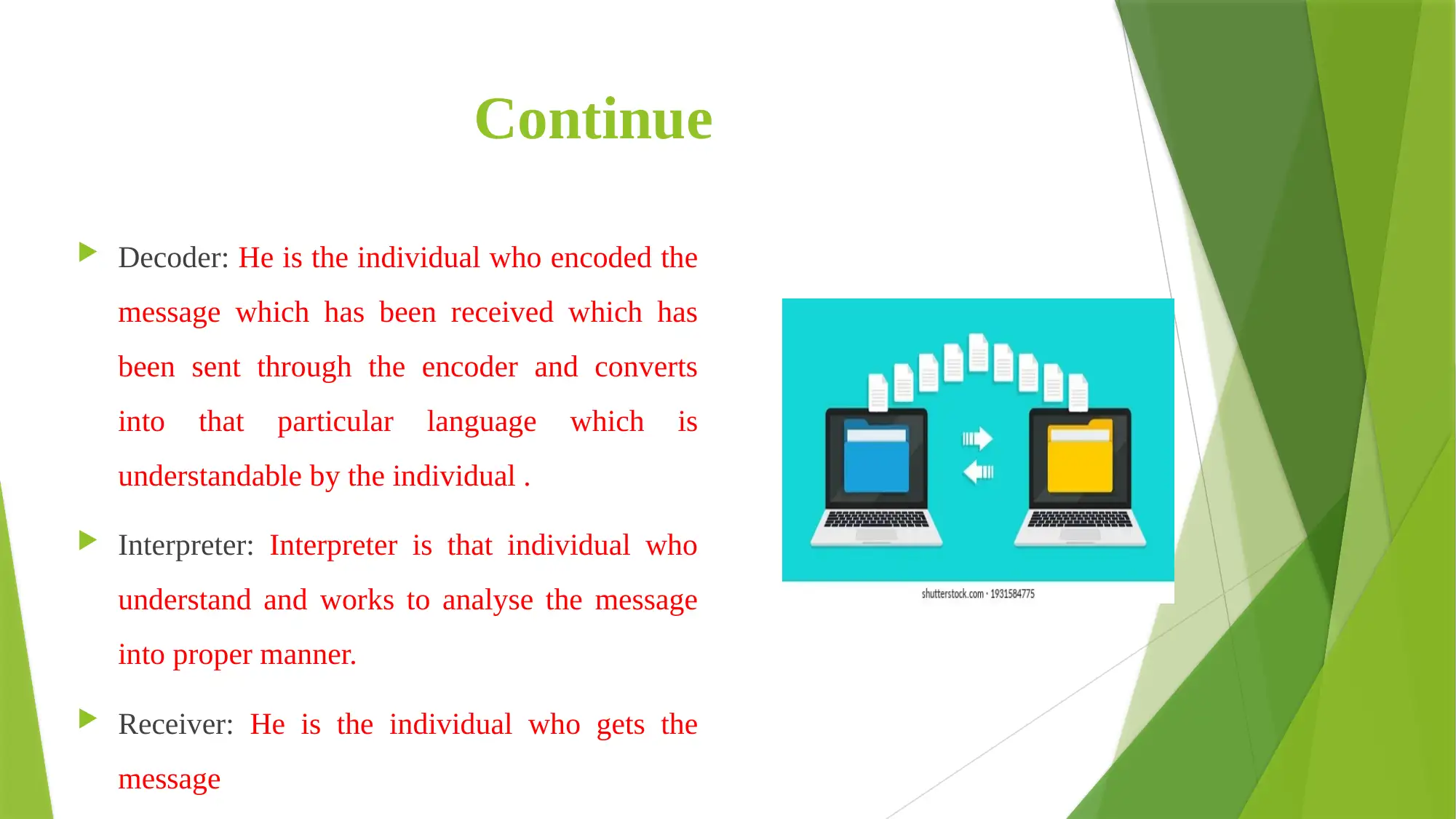
Continue
Decoder: He is the individual who encoded the
message which has been received which has
been sent through the encoder and converts
into that particular language which is
understandable by the individual .
Interpreter: Interpreter is that individual who
understand and works to analyse the message
into proper manner.
Receiver: He is the individual who gets the
message
Decoder: He is the individual who encoded the
message which has been received which has
been sent through the encoder and converts
into that particular language which is
understandable by the individual .
Interpreter: Interpreter is that individual who
understand and works to analyse the message
into proper manner.
Receiver: He is the individual who gets the
message
Paraphrase This Document
Need a fresh take? Get an instant paraphrase of this document with our AI Paraphraser
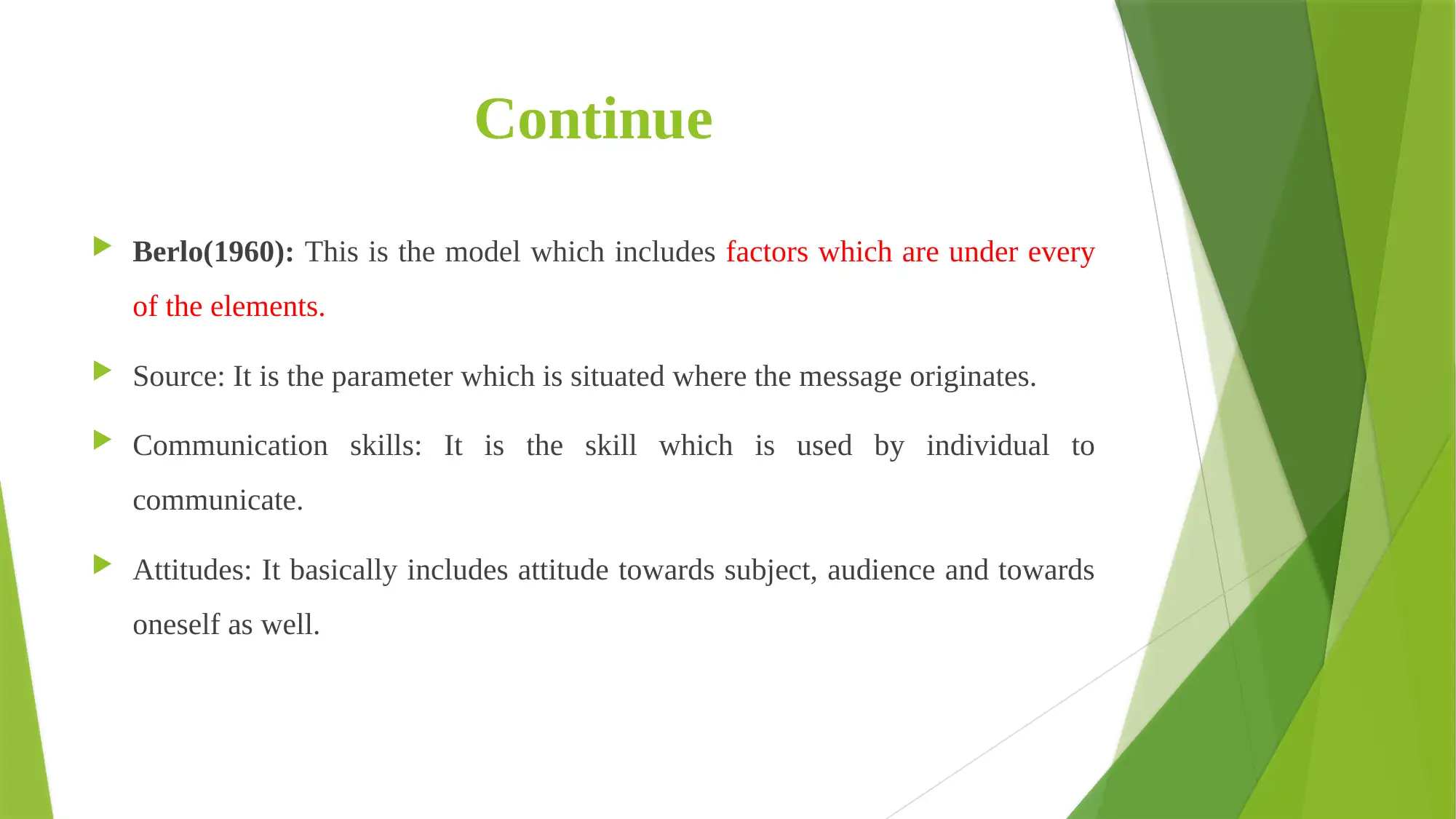
Continue
Berlo(1960): This is the model which includes factors which are under every
of the elements.
Source: It is the parameter which is situated where the message originates.
Communication skills: It is the skill which is used by individual to
communicate.
Attitudes: It basically includes attitude towards subject, audience and towards
oneself as well.
Berlo(1960): This is the model which includes factors which are under every
of the elements.
Source: It is the parameter which is situated where the message originates.
Communication skills: It is the skill which is used by individual to
communicate.
Attitudes: It basically includes attitude towards subject, audience and towards
oneself as well.
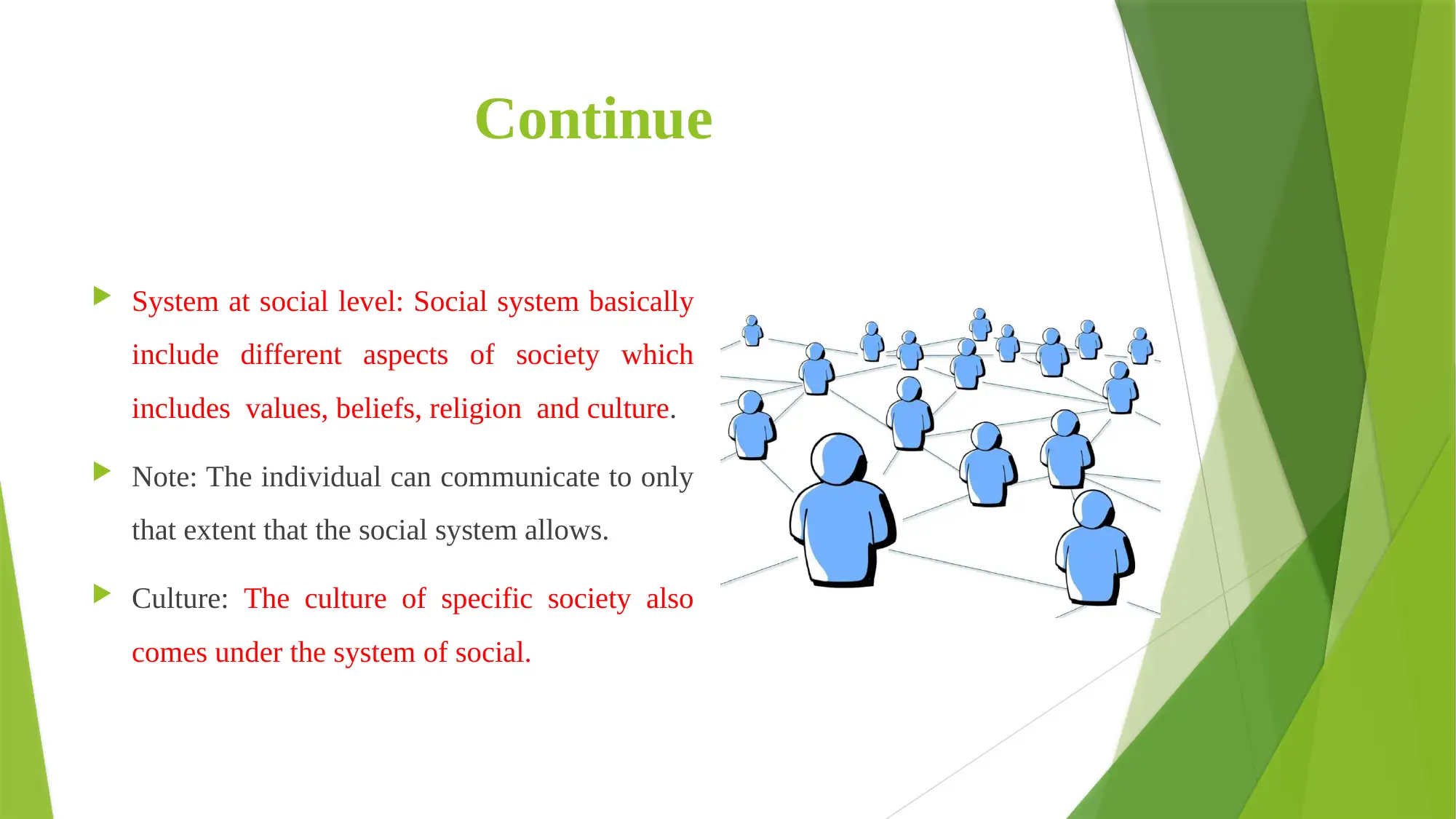
Continue
System at social level: Social system basically
include different aspects of society which
includes values, beliefs, religion and culture.
Note: The individual can communicate to only
that extent that the social system allows.
Culture: The culture of specific society also
comes under the system of social.
System at social level: Social system basically
include different aspects of society which
includes values, beliefs, religion and culture.
Note: The individual can communicate to only
that extent that the social system allows.
Culture: The culture of specific society also
comes under the system of social.
⊘ This is a preview!⊘
Do you want full access?
Subscribe today to unlock all pages.

Trusted by 1+ million students worldwide
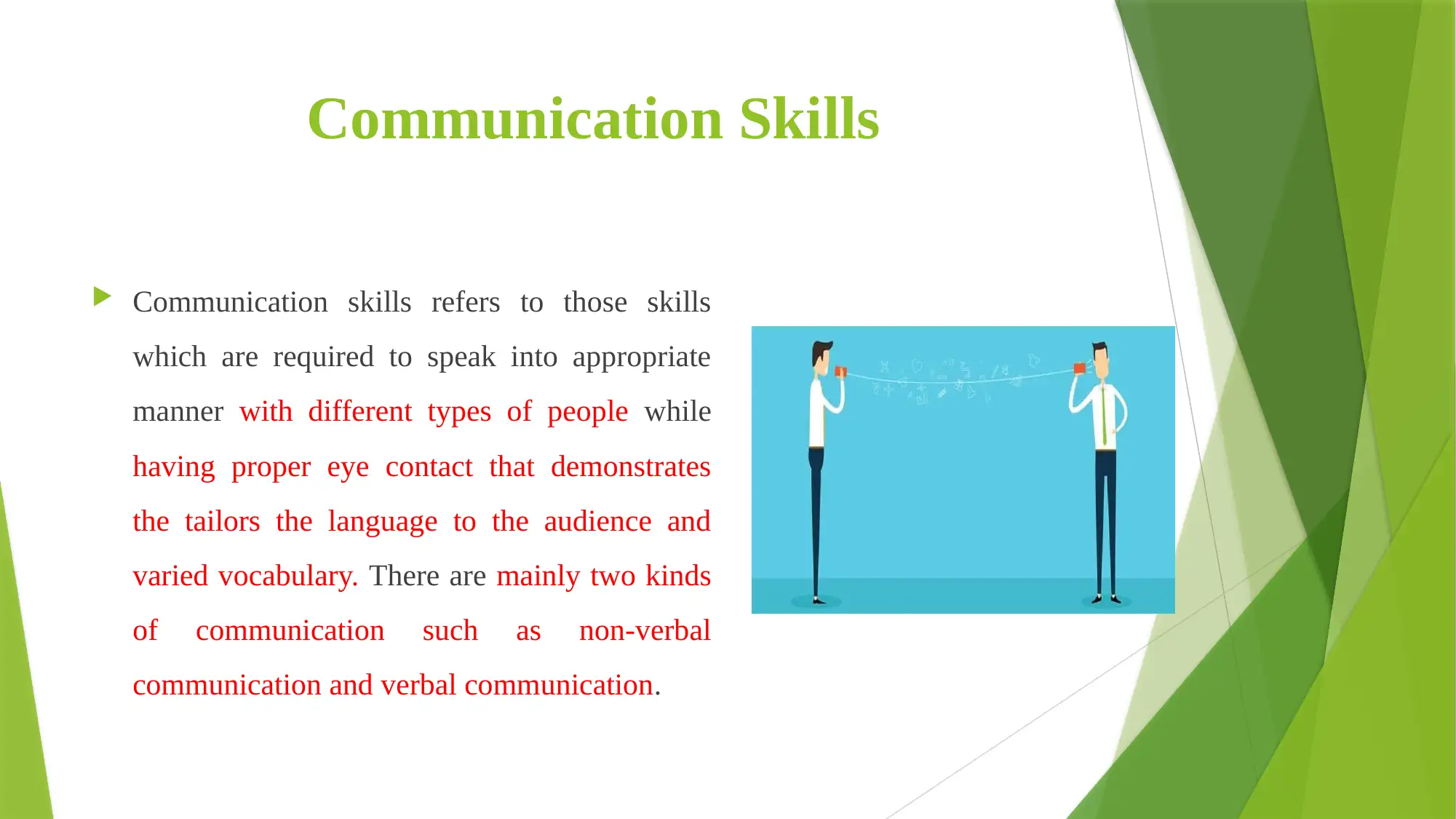
Communication Skills
Communication skills refers to those skills
which are required to speak into appropriate
manner with different types of people while
having proper eye contact that demonstrates
the tailors the language to the audience and
varied vocabulary. There are mainly two kinds
of communication such as non-verbal
communication and verbal communication.
Communication skills refers to those skills
which are required to speak into appropriate
manner with different types of people while
having proper eye contact that demonstrates
the tailors the language to the audience and
varied vocabulary. There are mainly two kinds
of communication such as non-verbal
communication and verbal communication.
Paraphrase This Document
Need a fresh take? Get an instant paraphrase of this document with our AI Paraphraser
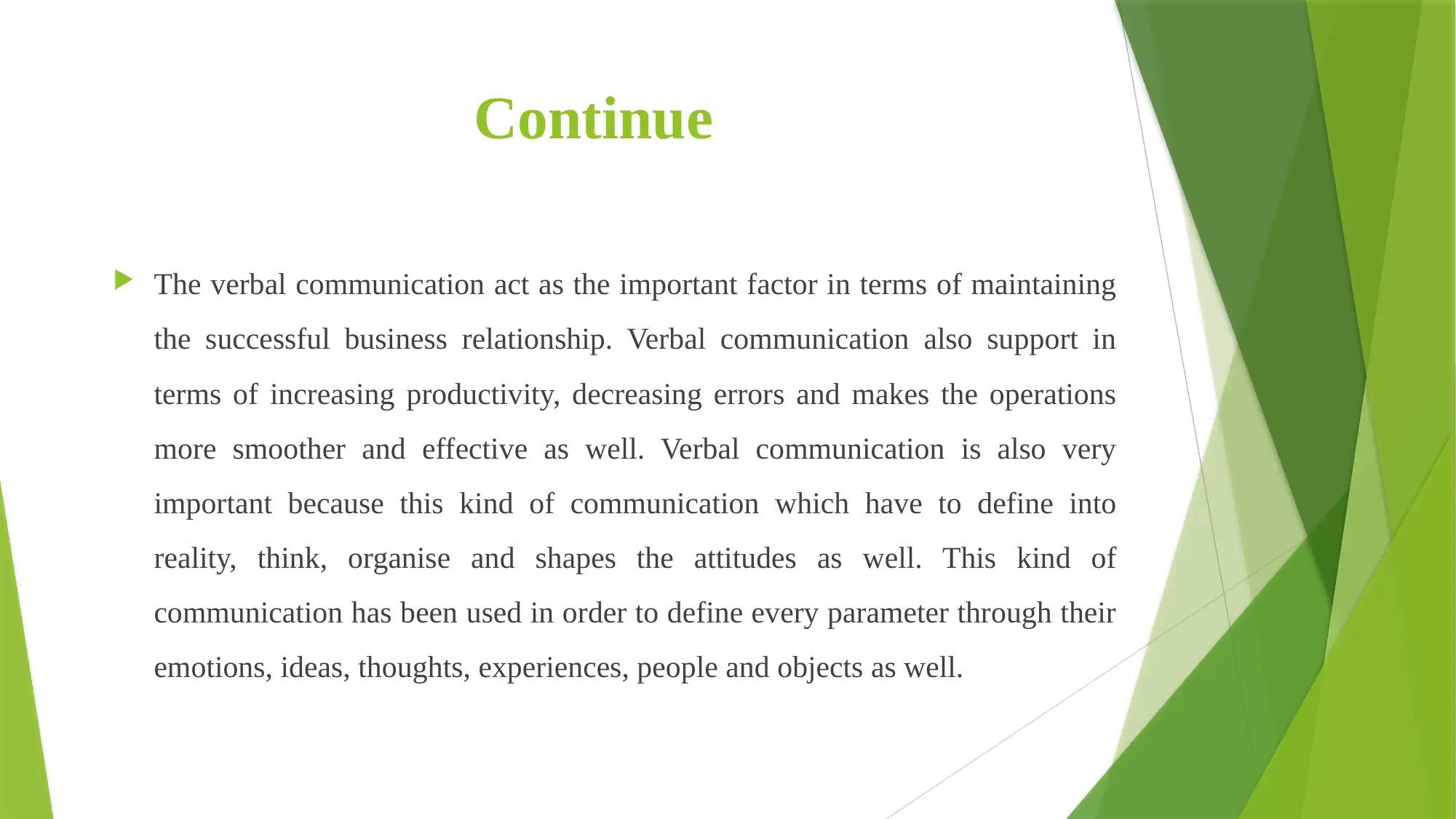
Continue
The verbal communication act as the important factor in terms of maintaining
the successful business relationship. Verbal communication also support in
terms of increasing productivity, decreasing errors and makes the operations
more smoother and effective as well. Verbal communication is also very
important because this kind of communication which have to define into
reality, think, organise and shapes the attitudes as well. This kind of
communication has been used in order to define every parameter through their
emotions, ideas, thoughts, experiences, people and objects as well.
The verbal communication act as the important factor in terms of maintaining
the successful business relationship. Verbal communication also support in
terms of increasing productivity, decreasing errors and makes the operations
more smoother and effective as well. Verbal communication is also very
important because this kind of communication which have to define into
reality, think, organise and shapes the attitudes as well. This kind of
communication has been used in order to define every parameter through their
emotions, ideas, thoughts, experiences, people and objects as well.
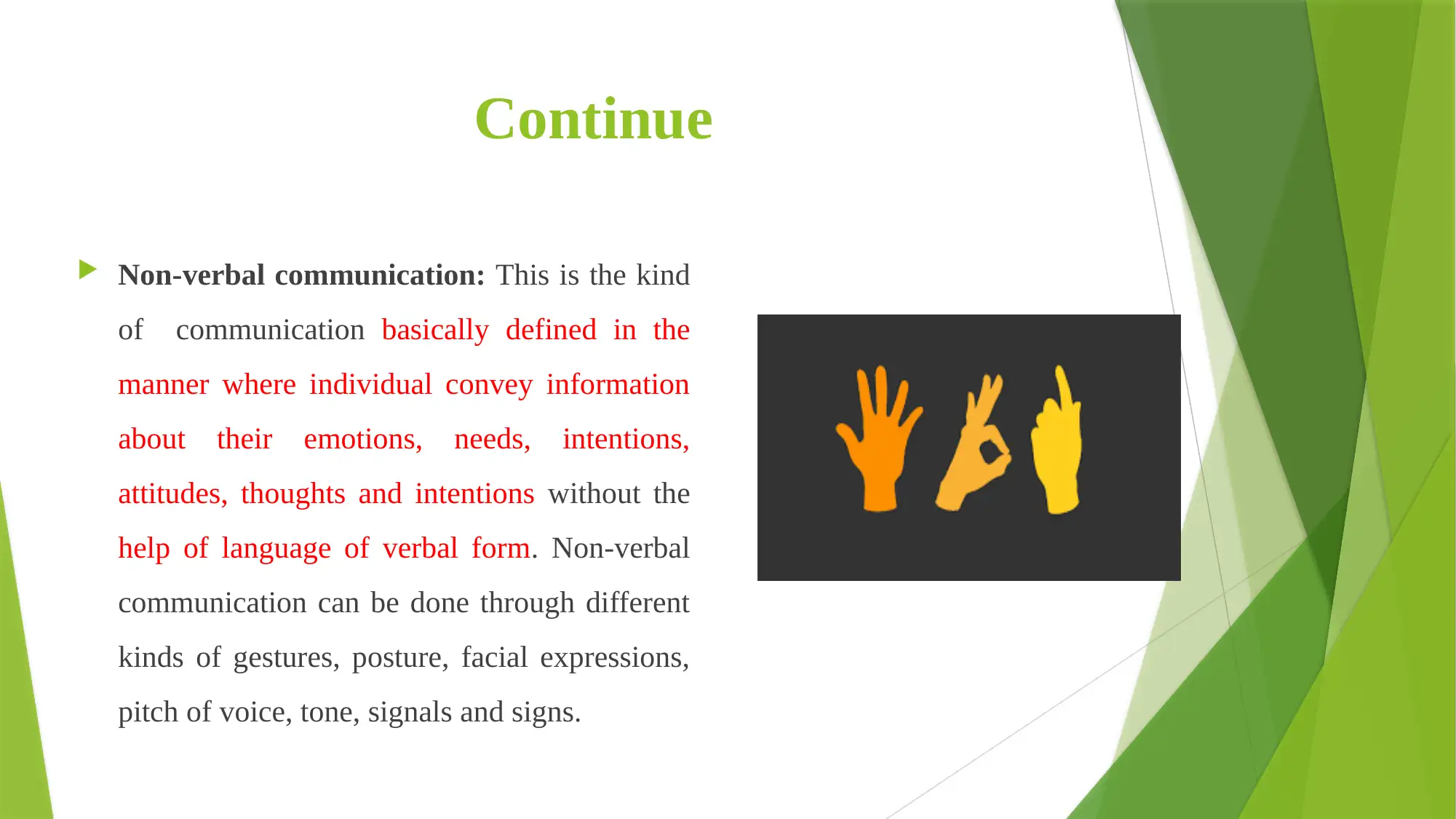
Continue
Non-verbal communication: This is the kind
of communication basically defined in the
manner where individual convey information
about their emotions, needs, intentions,
attitudes, thoughts and intentions without the
help of language of verbal form. Non-verbal
communication can be done through different
kinds of gestures, posture, facial expressions,
pitch of voice, tone, signals and signs.
Non-verbal communication: This is the kind
of communication basically defined in the
manner where individual convey information
about their emotions, needs, intentions,
attitudes, thoughts and intentions without the
help of language of verbal form. Non-verbal
communication can be done through different
kinds of gestures, posture, facial expressions,
pitch of voice, tone, signals and signs.
⊘ This is a preview!⊘
Do you want full access?
Subscribe today to unlock all pages.

Trusted by 1+ million students worldwide
1 out of 18
Related Documents
Your All-in-One AI-Powered Toolkit for Academic Success.
+13062052269
info@desklib.com
Available 24*7 on WhatsApp / Email
![[object Object]](/_next/static/media/star-bottom.7253800d.svg)
Unlock your academic potential
Copyright © 2020–2025 A2Z Services. All Rights Reserved. Developed and managed by ZUCOL.





